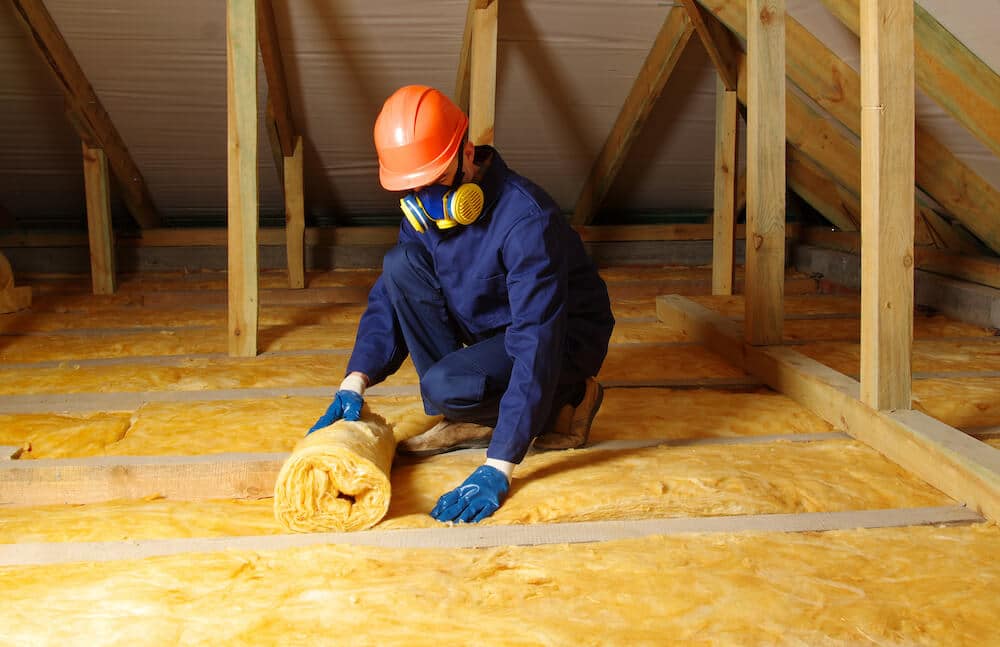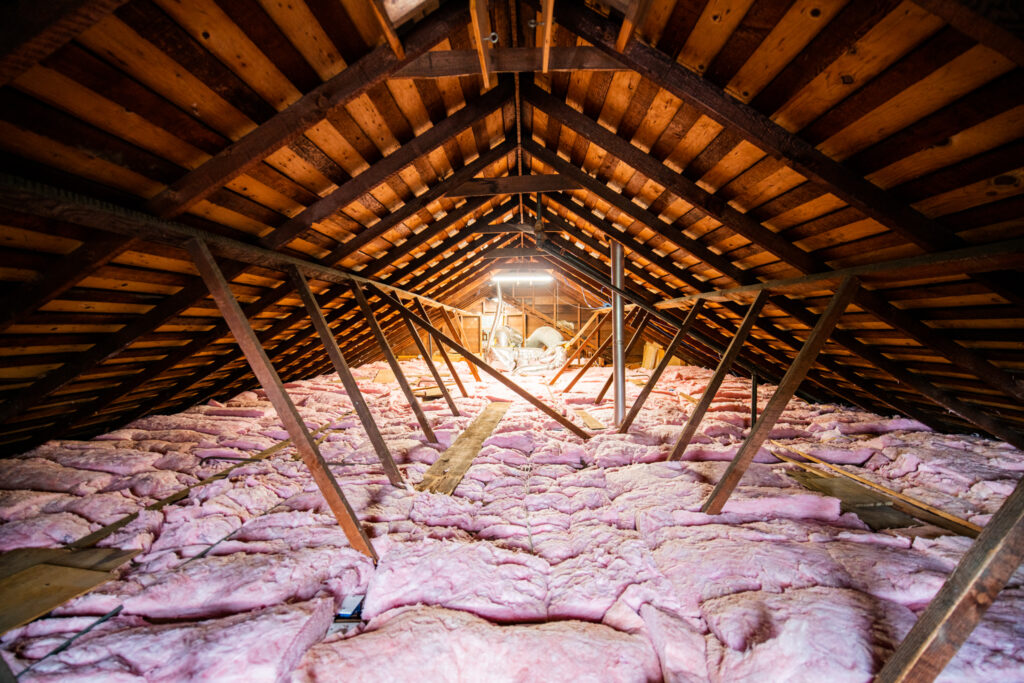Attic Insulation DFW: What You Required to Know Prior To Upgrading Your Insulation
Wiki Article
Discover the Various Kinds Of Attic Insulation and Their Special Advantages for Your Home's Power Effectiveness

Fiberglass Insulation
Fiberglass insulation is among the most typically used products for attic room insulation as a result of its exceptional thermal efficiency and cost-effectiveness. Made up of small glass fibers, this product properly traps air, developing a shielding barrier that assists maintain constant indoor temperatures. Its high R-value per inch makes it particularly reliable at resisting warm transfer, which is critical for energy preservation in homes.
Installation of fiberglass insulation is relatively uncomplicated, often offered in batts or loose-fill types, suiting various attic room configurations. In addition, it is non-combustible and immune to moisture, reducing the danger of mold and mildew growth. This resilience adds to its durability, making fiberglass a feasible long-term investment for house owners.
Furthermore, fiberglass insulation is commonly manufactured from recycled materials, which improves its eco-friendliness. The material can also add to soundproofing, decreasing noise transfer between areas. While it is important to put on protective gear throughout setup to stay clear of irritability from the fibers, the general advantages of fiberglass insulation, including energy savings and ecological considerations, make it a prominent selection for boosting attic efficiency and promoting a comfy living atmosphere.
Spray Foam Insulation
Spray foam insulation is a highly effective choice for attic insulation, known for its exceptional air securing and thermal efficiency. This innovative insulation material is made up of a mixture of isocyanate and polyol resin, which, when integrated, increases rapidly to load gaps and tooth cavities in the attic room room. Its ability to adhere to different surface areas makes sure a continual barrier versus air leakages, substantially minimizing warm loss during colder months and warmth gain throughout warmer seasons.Among the vital advantages of spray foam insulation is its high R-value per inch, which indicates it provides outstanding thermal resistance in a relatively thin application. This is specifically beneficial in attics where area is typically restricted. Additionally, spray foam can aid reduce wetness accumulation, reducing the threat of mold and mildew and mildew growth, which can be harmful to both the framework and interior air top quality.
While the preliminary cost of spray foam insulation might be more than typical alternatives, its lasting power savings, coupled with raised comfort and boosted home worth, make it a rewarding financial investment for house owners seeking boosted energy performance. Attic Insulation DFW. In general, spray foam insulation sticks out as an effective remedy for enhancing attic room insulation
Cellulose Insulation

Cellulose insulation is a popular selection for attic room insulation, mainly composed of recycled paper products treated with fire resistants. This eco friendly alternative is known for its exceptional thermal performance, efficiently lowering heat transfer in both summer season and wintertime months. The thick composition of cellulose enables it to load gaps and spaces in attic areas, offering a smooth barrier versus air leakages.
Among the substantial benefits of cellulose insulation is its capability to withstand mold and insects, owing to the fire resistant treatments utilized throughout production. Furthermore, it flaunts a high R-value per inch, which converts right into remarkable energy performance. Property owners can anticipate lower home heating and cooling costs as a result of enhanced insulation.
Installation is normally completed with blowing loose cellulose into the preferred area, enabling a fast and effective procedure. This method also decreases interruption to the existing structure. Cellulose insulation has a fairly low ecological influence, as its production procedure uses recycled materials, adding to lasting building practices.
Rock Woollen Insulation
Amongst the different alternatives for attic room insulation, rock woollen, additionally recognized as mineral woollen, stands out because of its excellent thermal and acoustic efficiency. Made from natural or recycled materials, rock wool is developed by best site melting rock and spinning it right into fibers, resulting in an item that supplies outstanding insulation properties.One of the considerable benefits of rock woollen insulation is its high R-value, which suggests its performance in withstanding heat circulation. This characteristic not only improves power performance yet additionally adds to maintaining a comfortable interior temperature level year-round. Furthermore, rock woollen is naturally fire-resistant, making it a much safer alternative for homes as it can withstand high temperature levels without melting or launching hazardous fumes.
Furthermore, rock woollen insulation succeeds in soundproofing abilities, properly reducing noise transmission between rooms and from outside sources. Overall, rock wool insulation offers an extensive remedy for enhancing energy performance, safety and security, and comfort in residential setups.
Glowing Barrier Insulation
Glowing obstacle insulation acts as an efficient remedy for reducing warm transfer in attic rooms, particularly in warmer environments. This sort of insulation works by showing glowing warmth away from living areas, therefore decreasing the amount of warmth that goes into a home throughout heat - Attic Insulation DFW. Normally composed of an extremely reflective product, such as aluminum foil, glowing obstacles are mounted in attic rooms, facing the roof, where they can intercept inbound warm from the sunlightThe primary advantage of radiant barrier insulation is its capacity to lower air conditioning prices. By showing heat rather than absorbing it, radiant obstacles can help maintain a more steady indoor temperature level, decreasing the work on a/c systems. This effectiveness converts right into reduced energy bills and increased comfort for house owners.
Along with energy financial savings, radiant obstacles can likewise add to boosted interior air high quality. By decreasing warm buildup, they aid minimize moisture levels, which can avoid mold and mildew growth and enhance total air circulation. When mounted appropriately, radiant barrier insulation can be an invaluable enhancement to any kind of energy-efficient home, making it a worthy factor to consider for home owners wanting to improve their attic insulation technique.
Final Thought
In conclusion, comprehending the various types of attic room insulation-- fiberglass, spray foam, cellulose, rock wool, and radiant barriers-- enables homeowners to make enlightened decisions relating to energy effectiveness. By choosing the suitable insulation material, substantial decreases in power her explanation costs can be accomplished, along with improvements in indoor convenience.

In conclusion, recognizing the different types of attic room insulation-- fiberglass, spray foam, cellulose, rock woollen, and glowing barriers-- enables house owners to make enlightened choices relating to energy performance.
Report this wiki page